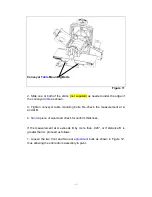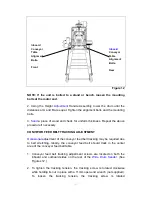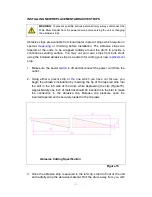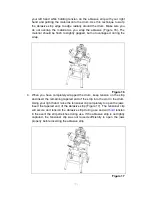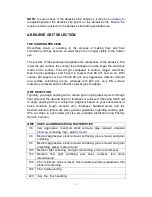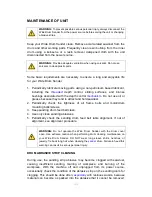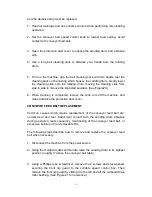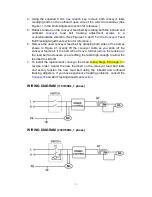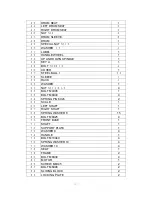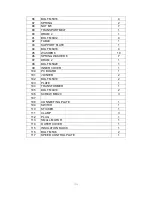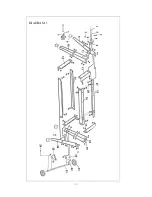
19
of the material being surfaced, and the feed rate selected are all
considered when
determining
the amount of material to be removed on
each pass. Never remove more than 0.8mm of material in one pass. The
variable feed rate is set to prevent burning and provide a smooth sanded
surface on different types and widths of materials. As a general rule, 1/4
turn or 0.4mm or less is recommended stock removal for coarser grits
and softer woods, while 1/8 of a turn or 0.2mm may be more desirable
with harder woods and/or finer grits if abrasives. When selecting the rate
of feed for the material being surfaced, the wider the material, the slower
the feed rate to be set. Similarly the harder the wood, the slower the feed
rate.
Some experimenting and practice will be required to become familiar with the
sanding performance of your Wide Drum Sander. While performing a
surfacing operation with your Wide Drum Sander closely parallels the wide
surface preparation of a planer, a planer is much more capable of making
deeper passes due to its characteristic knives, while a Wide Drum Sander is
limited to its abrasive material for stock removal.
SANDING
1. With power off,
place
stock on the feed table and advance the stock to a
point so that you can adjust height of sanding drum to equal thickness of
stock at its greatest point.
2. Connect and turn on dust collection equipment.
3. Adjust feed rate to match sanding requirements and width of stock.
4. Turn on unit and
place
stock on the feed
conveyor
table allowing the
feed
belt
to carry the stock into and engage the sanding action of the drum.
Support long stock as necessary during the feed operation. Once the
sanding operation feed allows, reposition yourself to the out feed side of
the machine to accept, support, and control the board as it exits the Wide
Drum Sander.
NOTE: Do not apply upward or downward pressure when supporting and
guiding stock through the sander. To do so may induce snipe (sander drum
dig-in) into the sanded stock.
5. Reverse the feed direction of the stock on successive passes, while
adjusting the depth of cut using the height adjustment handle assembly
(refer to Figure
1
).
There are several variables that may affect the proper
depth of cut selected, suck as
abrasive grit choice, width of stock,
hardness of stock, feed rate and moisture content of stock.
Summary of Contents for MM3126
Page 31: ...30 DIAGRAM 1 ...
Page 32: ...31 DIAGRAM 2 ...












